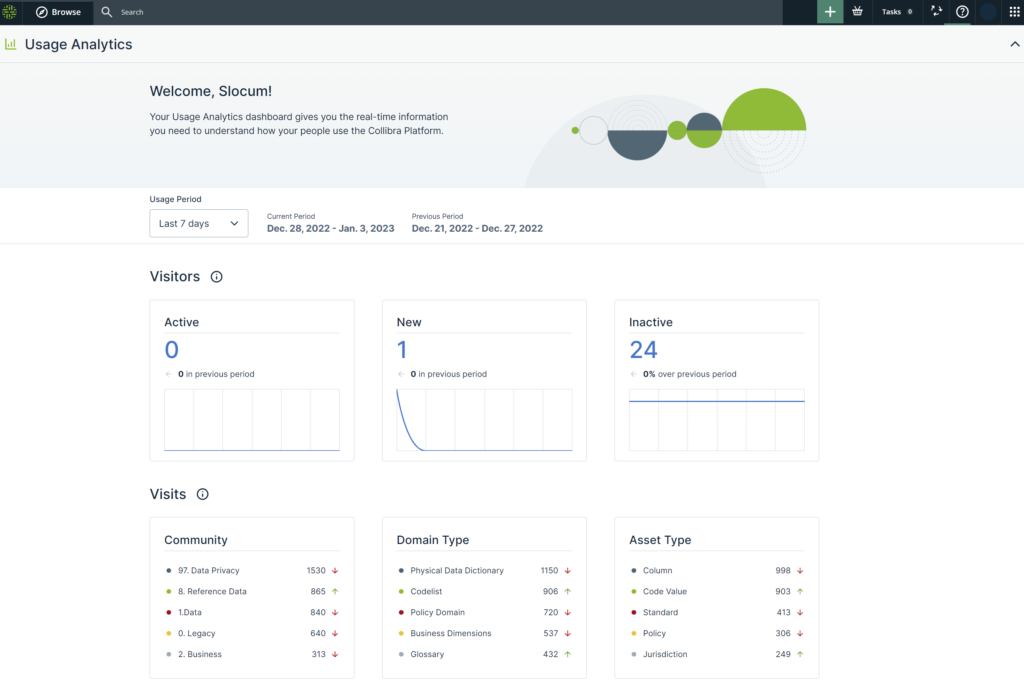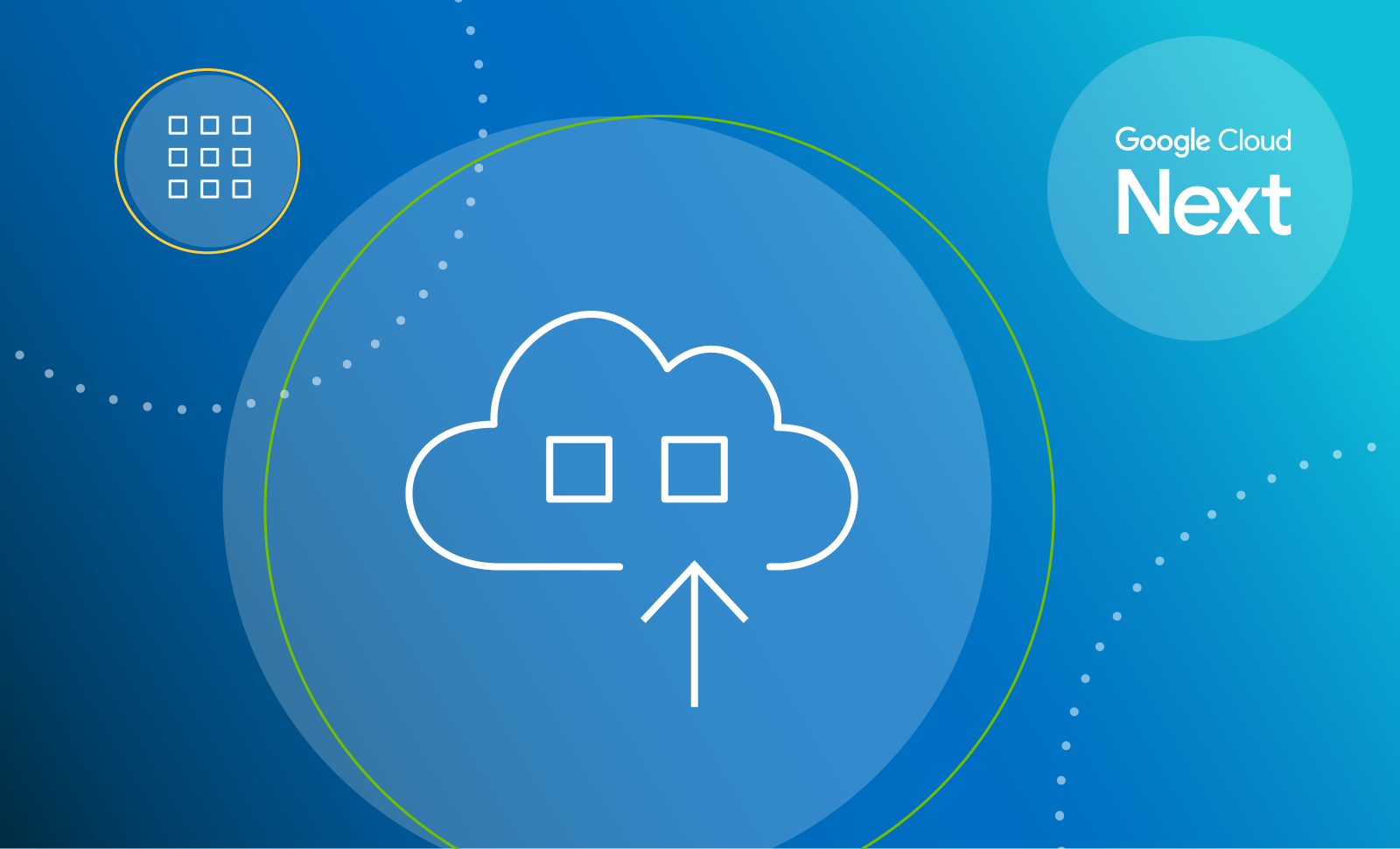One of the best parts about working at Collibra is how engaged our customers are. They are a constant source of feedback, ideas, and inspiration for how to evolve our products.
From a product management standpoint, their engagement empowers us to take a pragmatic product management approach — meaning we get feedback early and often, rather than trying to make something perfect before showing anyone.
Discover how Collibra is helping Equifax achieve digital transformation goals with a seamless, centralized data fabric platform.
Hear from Peter Vennel at Equifax and read their customer story now.
Collibra Usage Analytics is an excellent example of a product that was initiated by customer feedback and developed in partnership with users. Usage Analytics provides real-time actionable insights so data leaders can proactively monitor Collibra use across the organization and maximize their investment in data intelligence.
“Customer engagement empowers us to take a pragmatic product management approach.”
The customer response since we officially launched the product in late 2022 has been exceptional. More than 50% of Collibra Data Intelligence Cloud customers have used it to get real-time actionable insights on their Collibra usage.
But this milestone didn’t come without challenges. Building Usage Analytics pushed us to think about data in new ways, and it required an evolution in our infrastructure and testing process.
Inspired by customer insight
We know from research that strong data cultures see better business outcomes. Yet, research also tells us that even though nearly all organizations have some sort of data intelligence solution, far fewer actually see widespread adoption.
My team’s focus is to help our customers defy that trend.
I lead product management for the Platform Adoption team. Our job is to make sure our customers not only add Collibra to their tech stack, but also maximize the impact of their data by adopting Collibra across their organization.
As a product manager, I’m always on the lookout for ideas, and I’m thankful that we have such good relationships with many of our customers. In fact, the insight that gave birth to Usage Analytics came directly from Collibra customers who, as part of regular quarterly business reviews with our team, received customized reports on Collibra usage within their organizations.
What we discovered was customers large and small really valued the ability to see Collibra usage — it helped data leaders understand company progress toward driving a data intelligence transformation and the return on their Collibra investment.
So with this insight, we set out to build usage analytics capabilities into the Collibra Data Intelligence Cloud.
Why storytelling became our superpower
The development of Usage Analytics is a good example of our pragmatic approach to product management.
First, we acknowledged that we were tackling a new challenge by developing a product that would be powered by analytical data, instead of our traditional operational data workloads, and storytelling was key.
The team recognized that you can’t just throw a bunch of charts and data at customers. To build Usage Analytics, we all needed to understand our users’ goals and what KPIs mattered to achieve those goals. Designers needed to understand how the data should be presented to tell a cohesive story, engineers needed to understand how the product should function to enable storytelling, and so on.
To understand what stories customers would need to tell and how Usage Analytics would support them, the user research and design process was continual and iterative. Once we had prototypes, we worked closely with Collibra users to create an intuitive interface that made it easy to understand Usage Analytics dashboards and metrics.
Senior Manager of User Experience Satpal Sharma and other members of our Design team did a fantastic job visualizing the data that matters. User Experience Designer Iwona Kasprzyk then checked the implementation, worked with Engineering and Product teams on the beta programs, and is now co-creating the future of Usage Analytics as we continue to build out the product. And our Engineering team, including Manager Matt Bryant and Senior Software Engineers Karel Hübl, Antonin Krotky, and Wojtek Blachut, used their expertise in processing analytical data to build the features our customers needed to develop and share their analyses. Interestingly, the development of Usage Analytics was also a process of understanding how to not only drive Collibra usage but also how to best communicate data intelligence, including what KPIs are most relevant for data stewards and much more.
Interestingly, the development of Usage Analytics was also a process of understanding how to not only drive Collibra usage but also how to best communicate data intelligence, including what KPIs are most relevant for data stewards and much more.
Evolving our infrastructure and testing
In addition to challenging us to shift our mindset toward storytelling, we also had to shift our tech stack to support analytical data. This, in turn, challenged us to adapt our beta process.
Our measure of success in our testing process is the amount of engagement and feedback we can get quickly. We’d rather get feedback on an early iteration of a product than wait until we feel it’s perfect to test it. That said, there are some non-negotiables we need to ensure before testing, such as security and stability.
“Our measure of success in our testing process is the amount of engagement and feedback we can get quickly.”
Analytical data requires more data, more storage, and more compute power, so we leveraged a service mesh to separate operational and analytical data. This was a new tech stack for us, and it is difficult to guarantee stability when testing something new. But we needed to test this with customers who require a high degree of stability, so we had to rethink our typical beta process.
We worked with Ryan Botten, Director of Product Engineering, and his team to devise a plan that let us launch Usage Analytics to a smaller, targeted segment of our customer base, and in new environments that would not disrupt the day-to-day operations of even our customers’ pre-production environments. This helped us gain feedback early while ensuring stability for our customers. We were ultimately able to fulfill those non-negotiable requirements while preserving our pragmatic approach. The lessons learned in successfully architecting for more stability turned out to be a great model for future releases.
We were ultimately able to fulfill those non-negotiable requirements while preserving our pragmatic approach. The lessons learned in successfully architecting for more stability turned out to be a great model for future releases.
Positioned for future development
Usage Analytics launched in November 2022, and the response has been incredible.
More than half of all Collibra customers have tried it, and the feedback sounds like: “This is fantastic! Can we also get [insert highly desirable feature]?” It’s exactly the kind of thing I hope for when launching a product: a positive experience and a vision for making it even better.
Now that Usage Analytics is launched, we continue to work on improving the experience. To do so, we are lucky to have such a talented, diverse group of developers, designers, and data analysts.
Above all, this process has reinforced what I’ve long believed about product management: When you create products based on customer insights, you put yourself in a great position to succeed.
Usage Analytics is something customers have been clamoring for. They’re excited about what we just rolled out, and we have no shortage of ideas to make it even better.
Some of the most exciting efforts are pushing beyond heuristics to predictive analytics. We want to empower our customers to be proactive with their data intelligence strategies. We are building our product with this goal in mind.
Why I love Collibra
Frankly, I jumped when I had the opportunity to join Collibra because I already knew it played in a validated market and had a proven product.
My experience as a Collibra Product Manager, however, has exceeded my expectations.
Leveraging our pragmatic approach to product management, I see ever-increasing opportunities and challenges that we are well-positioned to take on.
Usage Analytics is one of those opportunities. It serves our primary goal of extending data intelligence to our customers, and the team that brought (and continues to bring) the experience of Usage Analytics to market demonstrates that ingenuity and teamwork can achieve ambitious results.




